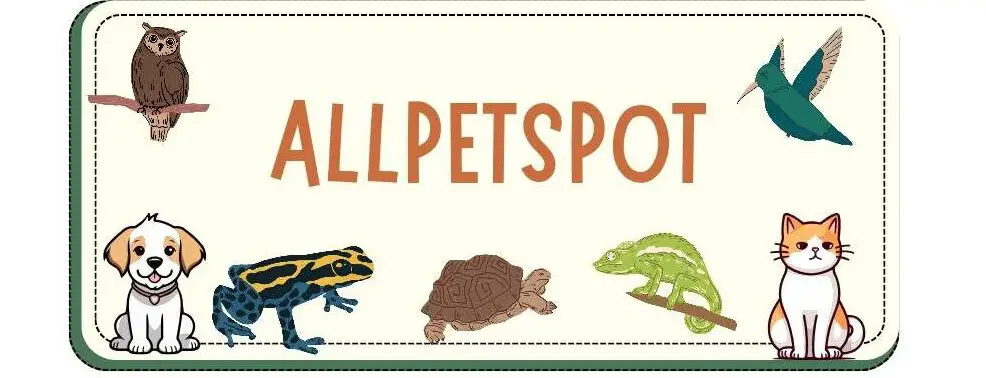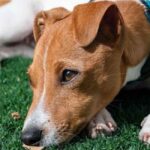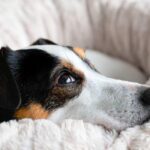Pug separation anxiety is exactly what this post is all about, we will outline and discuss the common signs of separation anxiety in Pugs.
Pugs were selectively bred to be around humans as a companion, not as a dog that can stay on their own, this means pugs are prone to separation anxiety when left alone for too long.
In this post, we will outline the signs of separation anxiety in pugs you should look out for, we will also discuss ways to avoid separation anxiety in pugs.
Without wasting much of your time let me quickly get down to why you are here which is pug separation anxiety.
Pug Separation Anxiety
Separation anxiety in pugs is a condition that occurs when a pug is separated from its owners for an extended length of time or even when they are not left alone unsupervised for an extended amount of time.
Biting, nipping, barking, self-isolation, injuries, and destructive chewing are all common behaviors associated with separation anxiety in pugs.
Pug separation anxiety is caused by leaving a pug alone at home, which may be avoided by giving a buddy.
Read more: 10 Common Pug Sick Symptoms
Pug separation anxiety symptoms
Some of the most common separation anxiety symptoms in pugs are as follows:
1. Chewing furniture
The most prevalent causes of chewing furniture in pugs are depression, frustration, tension, and loneliness, all of which can be triggered by separation anxiety.
If your pug is eating everything he sees, something is wrong. It’s possible that it’s a symptom of separation anxiety.
Spray locations where you don’t want your pug to chew or conceal your valuables and electronic cables, according to some.
However, the truth is that you are not paying attention to your pug’s needs.
Why not determine out what’s causing the destructive gnawing and fix it once and for all, rather than spraying or hiding things?
You may get something for your pug to chew on if you want to keep him away from your valuables.
2. Freezing on owner’s departure or arrival
Your pug is terrified of being alone when he freezes or goes rigid when you arrive home from work or are ready to leave.
Constantly freezing in your pug might be hazardous to both you and your pug, as it can lead to behavior problems.
It’s a sign that your pug is agitated and won’t be able to handle the situation, which might lead to a bite once your pug starts freezing unnecessarily when you are about to leave.
Constant freezing in small dogs on the owner’s departure or arrival, such as in pugs, is a common symptom of anxiety that should not be ignored.
3. Excessive barking on owners departure
Excessive barking can cause pugs to experience despair, irritation, stress, tension, and loneliness as a result of separation anxiety.
Separation anxiety in pugs develops over time, but as previously indicated, it can emerge within minutes of the owner’s departure.
Your pug may bark excessively when you go for work or somewhere else because he is afraid of being alone.
Even while pugs are talkative when they are with their owners or when a stranger is present, it is only when they are with their owners or when a stranger is there that they become chatty.
So, if your pug begins to bark considerably more than usual when you leave or arrive, you should pay heed to such indicators.
4. Constantly growling upon your departure
Your pug utilizes growling as a means of communication because they can’t tell you if they’re angry or uncomfortable using words.
Growling is a popular technique for your pug to show his or her dissatisfaction over something.
It might mean that someone is violating their personal space, that they are experiencing separation anxiety, that they are afraid, or that they are irritated by anything.
It isn’t necessarily meant to be aggressive, but it is usually a warning that your dog is uncomfortable.
Give your pug some room if they’re growling over food, for example, so they can eat in peace, this is only if you didn’t socialize your pug.
However, if your pug is weeping because you’re leaving, don’t ignore them. This is one of the most obvious indications of pug separation anxiety.
5. Trying to escape and follow you when you are leaving
When your pug is stressed or has separation anxiety, he will do everything in his power to get out of the house and find you when you are about leaving.
Your pug may bang his head and teeth against the crate bars, injuring himself in the process, all in the name of pushing him to leave because he was scared of being alone.
If your pug tries to flee the house everytime you leave, don’t ignore it; it might escalate to unwanted behavior issues.
This is a dangerous problem since it shows that your pug is terrified of being alone, which causes separation anxiety.
6. Digging in your backyard or his bed
One of the most prevalent causes of your pug digging up your yard or excavating his sleeping bed is separation anxiety.
Because they are alone or have nothing else to do, they dig to keep themselves occupied, which suggests they are frustrated.
As a result, if you come home one day to find your pug digging in your yard, you must intervene.
That is an obvious sign that your pug is bored, and ignoring it will only make things worse.
On the other hand, if you notice your pug is digging or chewing his bed that means his stressed or frustrated.
7. Urinating or defecating uncontrollably
If your pug is fully potty trained but still has accidents every time you leave the house.
This is a clear sign that your pug is worried or experiencing separation anxiety while you’re away.
Your puppy or adult pug may start eating his or her own faeces as a result of anxiety, so keep an eye out for this.
Although this symptom is unpleasant, you may take actions to avoid it or just treat the underlying cause, which may be a concern.
8. Increased hiding behavior
Increased hiding behavior in a pug can be caused by a number of things, but separation anxiety and fear are the most prevalent.
When a pug gets stressed, he may seek sanctuary in a small room or a piece of the owner’s clothing that smells like him.
Your dog may spend hours curled up beneath the table or somewhere in the home to relieve himself.
Don’t ignore it if your pug begins to hide unnecessarily; instead, try to figure out why. This is one of the most obvious indications of pug separation anxiety.
Ways to prevent separation anxiety in Pugs
If your pug already suffers from separation anxiety, I recommend seeing your physician or scheduling time to spend with your pug.
There are, however, additional options for avoiding or curing pug separation anxiety, such as the ones listed below:
1. Start proper crate training sessions
Crate training is a popular puppy training method that can help with a variety of issues, including separation anxiety.
Crate training may give your pug a safe, relaxing environment when you’re away for an extended period of time.
The goal is to get the dog to link fun items like chew toys and food-releasing puzzle games with his kennel, so he enjoys spending time there.
When left alone, some dogs feel safer and more at ease, so keep an eye on your puppy’s behavior to see whether his anxiety symptoms improve or worsen.
2. Desensitization and Counter-Conditioning of your pug
Teach your pug that there are benefits of being separated or staying alone at home once in a while.
Begin by leaving him for little periods of time, gradually increasing the time you spend away from him.
Consider giving your puppy a high-value reward that he appreciates and that you only use for critical lessons and incentives if he is already conditioned to go into stress mode when you leave him.
If you give him a special reward just before you leave, he may begin to anticipate it.
You may also make your puppy’s departure less painful by desensitizing him to the indicators that you’re going.
3. Get a treats dispenser
There is no doubt that pugs love treats, therefore, you can use this to your advantage but in moderation to avoid obesity.
This is a great technique to keep your pug engaged while you’re away from home; pugs love rewards and food, so you can use that to keep them entertained.
Too many treats may also be a problem for pugs, as they can cause health problems.
As a result, moderation is essential; you may design the dispenser to drop incentives for your dog over a period of time that suits you.
Start the reward dispenser training when you’re at home so that when you leave your dog and sit, the treats will fall.
One treat at a time will keep him interested for a while. You and your dog can experiment with different times to see what works best for you.
Here is a recommended treats’ dispenser from Chewy or this from Amazon.
4. Set up a clear window view
Pugs are such adorable little dogs that they are always interested in what is going on around them, and they may spend the time waiting for their favorite person to return home by observing what is going on outside the window.
Your pug will like sitting by the window and watching the world go by if you live in a busy location.
Leave the windows unobstructed. Make sure your pug climbs up and down while you’re gone to keep him busy.
If your pug is prone to leaping out the window, make sure your windows have secure screens.
To avoid unpleasant barking at passers-by, you must properly socialize your pug with other dogs, animals, and humans.
5. Hire a pet sitter
It’s a good idea to hire a pet sitter for your pug if you’ll be gone for most of the day to avoid separation anxiety.
A pet sitter for your pug will pay between $20 and $35 depending on your state and agreements, and who will sit your pug.
As a result, the pet sitter will regularly visit your pug while you are gone till you return.
6. Maintain suitable daily routine
Make a plan for yourself that includes playing, walking, gaming, and eating. Your pug will be more relaxed since he will always know what to expect.
Because your pug will be occupied the bulk of the day, he will never be bored or notice your absence.
Create and keep to a daily routine that works for you and your pug, and always delegate responsibility to your pug.
If it’s time for a meal, for example, don’t skip it in favor of anything else; instead, keep practicing until your pug feels comfortable with it.
Most worries can be averted if you and your pug have a schedule that works for both of you.
7. Provide a stress-free environment and calming spot
Make your pug’s surroundings as comfortable and relaxing as possible. You should bring the same bed, blanket, or mat with you while providing a potentially stressful environment for your pug.
Reward calming activities on the mat on a frequent basis, even when stress levels are low, to teach your pug to link the mat with tranquility.
They have a safe place to go when they leave the house, go to the vet, or are confronted with anxiety triggers.
8. Leave the radio or television on when you leave
Another common way to reduce separation anxiety in pugs is to train them to associate calmness with watching TV or dog programs.
While you are away, you may show your pugs a variety of dog shows to help them relax and observe.
Get as many dog movies as you can and let your dog choose the ones that will keep them engaged and quiet.
While you’re busy with other things, teach your pug to sit and watchdog shows on TV while you’re busy with other activities.
9. Get a second pet
Pugs are prone to separation anxiety since they were carefully developed to be a human companion and thrive solely on human connection.
If you are not always available, having a second companion pet as soon as possible is one of the best, if not the best, techniques to prevent separation anxiety in Pugs.
Your pug will be less likely to suffer separation anxiety if you have another pet.
To minimize separation anxiety, you should get a second companion pet for your pug.
Heads up
Boredom is a big contributor to separation anxiety in Pugs, any sensations of loneliness are amplified by separation anxiety.
As a result, the idea is to provide toys for your Pug that they will notice and enjoy playing with on their own is also a fantastic way to prevent separation anxiety in Pug.
If your Pug’s separation anxiety has progressed to the point that it is causing intense and chronic stress and negatively impacting your dog’s quality of life, it may be time to provide further support in the form of a supplement, aromatherapy, or a veterinarian-prescribed medicine.
Finally, a Pug’s ability to cope with being alone may improve as he grows older.
Owners considering adding to their Pug family to relieve the anxiousness of an existing dog should take their time before making such a huge commitment.
Read more: 16 Low Maintenance Small Dogs: See Our Top 5 Picks.
Pug anxiety symptoms
Here are some of the most common pug anxiety symptoms:
- Restlessness
- Panicked behavior
- Depression
- Frustration
- Destructive chewing
- Self-licking
- Whining
- Excessive drooling
- Barking
I hope your question about Pug separation anxiety was answered to your understanding!!!









